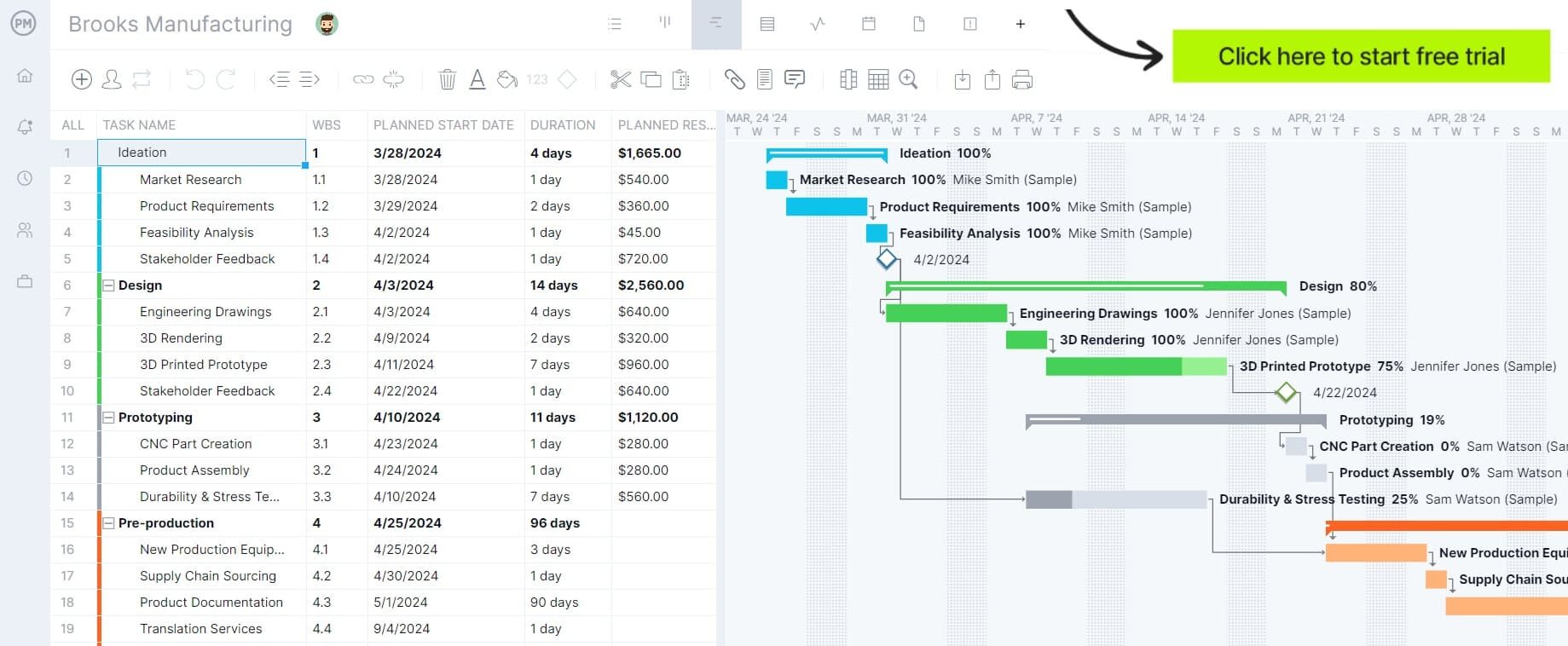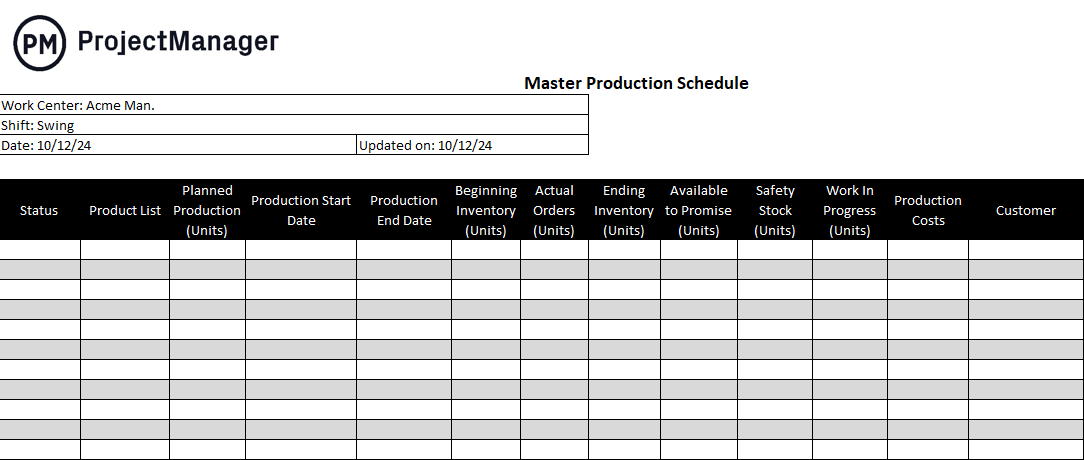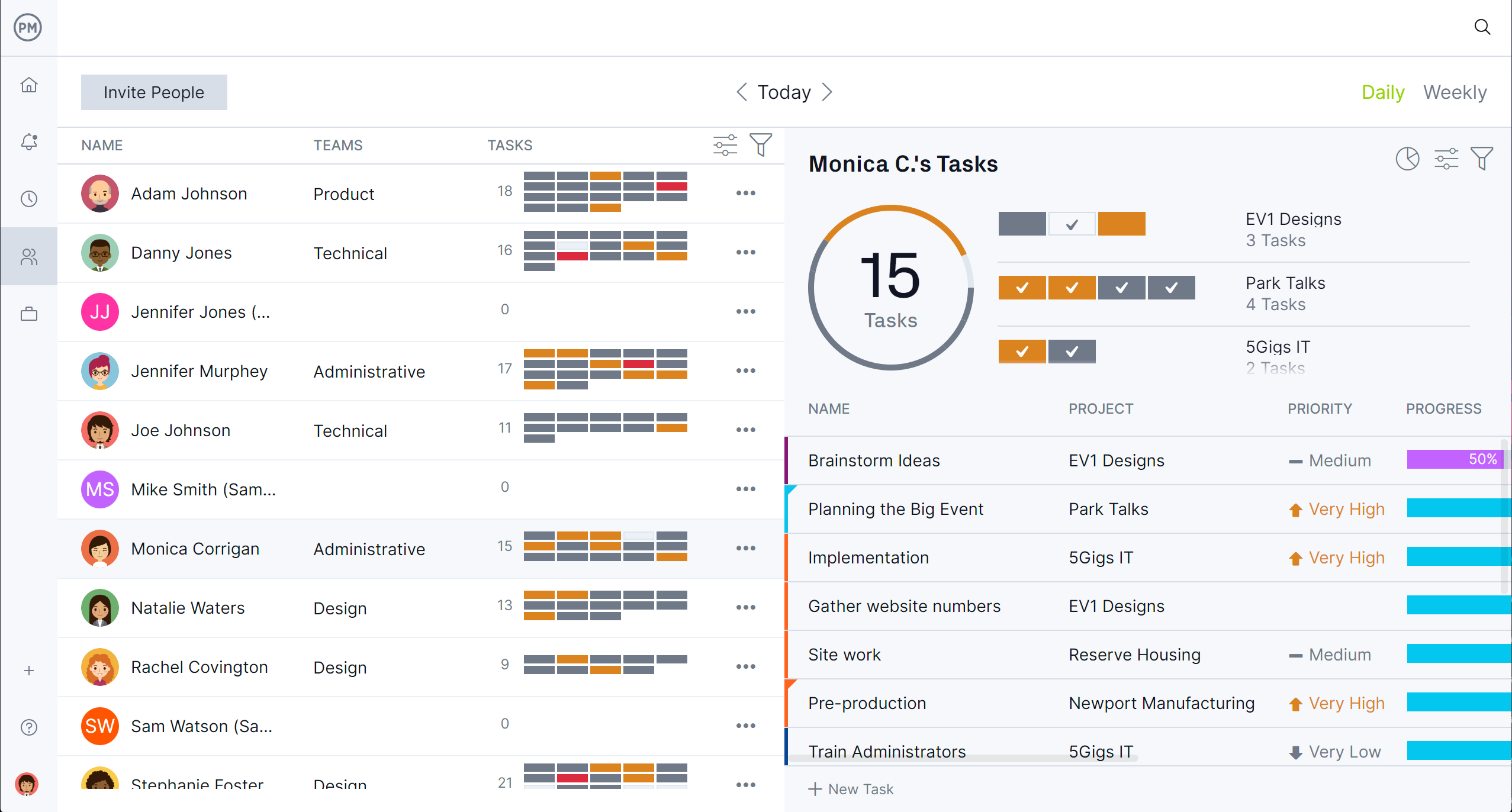Production operations management plays a crucial role in keeping processes efficient and ensuring that products meet quality standards while being delivered on schedule. From balancing resources and coordinating workflows to maintaining supply chain efficiency, strong oversight of production operations helps companies reduce costs and improve performance across every stage of the production cycle. Organizations that prioritize streamlined processes are better equipped to respond to shifting customer demands and market changes without sacrificing output or profitability.
However, managing production operations is not without its challenges. Teams must navigate issues like material shortages, labor allocation, equipment downtime and fluctuating demand, all while staying aligned with business goals. The complexity of coordinating multiple functions – from planning and scheduling to monitoring performance – means that effective production operations management requires clear objectives, data-driven insights and the right mix of technology and strategy. These factors combine to create an environment where efficiency, adaptability and continuous improvement determine success.
What Are Production Operations?
Production operations refer to the day-to-day processes involved in manufacturing goods, from planning and scheduling to execution and delivery. It covers everything from managing resources and monitoring workflows to ensuring quality control and meeting customer deadlines. Successful production operations balance efficiency with flexibility, allowing teams to handle unexpected disruptions while maintaining consistent output.
Effective production operations also require coordination between different departments, including procurement, inventory management and quality assurance. Each step in the process must be carefully aligned to reduce downtime, optimize labor and equipment use and minimize costs. The goal is to create a smooth flow of activities that turns raw materials into finished products with minimal waste and maximum efficiency.
Project management software brings structure and visibility to production operations by centralizing planning, scheduling and tracking in one platform. It allows managers to allocate resources effectively, monitor timelines in real time and quickly identify bottlenecks that could lead to delays. Features like dashboards, automated workflows and cost tracking provide actionable insights, helping teams stay on schedule and within budget.
ProjectManager stands out as an ideal solution for production operations because it combines powerful planning tools with real-time tracking. Its Gantt charts link task dependencies, track resource use and allow teams to set baselines to compare planned vs actual performance. Combined with workload charts, dashboards and customizable workflows, our software gives manufacturers a clear view of their operations while helping them adapt quickly when challenges arise. Get started with ProjectManager today for free.

What Is Production Operations Management?
Production operations management focuses on overseeing and optimizing the processes involved in manufacturing goods to ensure efficiency, quality and timely delivery. It encompasses planning, scheduling, resource allocation, inventory control and performance monitoring to coordinate all aspects of production from raw materials to finished products. The aim is to balance cost efficiency with productivity, ensuring operations run smoothly while meeting customer demands.
This discipline also involves continuous improvement, identifying areas where processes can be streamlined or automated to reduce waste and downtime. By integrating data-driven decision-making, production operations management helps organizations stay competitive in dynamic markets and respond quickly to changes in demand, supply chain disruptions or production challenges.

Get your free
Production Schedule Template
Use this free Production Schedule Template to manage your projects better.
Get the Template
Production Operations Process
The production operations process provides a structured approach to managing how goods are manufactured, from initial planning to final delivery. Each stage plays a critical role in ensuring efficiency, reducing waste and maintaining product quality while keeping production timelines and costs under control.
1. Production Planning and Scheduling
This stage sets the foundation by determining what will be produced, when and in what quantity. It aligns production capacity with demand forecasts, allocates resources and establishes timelines to ensure smooth operations.
2. Production Routing
Routing defines the path materials follow through different workstations or departments. It ensures an efficient sequence of operations, minimizing delays and optimizing workflow.
3. Dispatching
Dispatching involves issuing work orders, instructions and materials to the production floor. It ensures tasks are started on time, workers have what they need and production stays on schedule.
4. Production Execution
Execution is where plans turn into action. Teams carry out manufacturing tasks according to defined schedules and standards, transforming raw materials into finished goods.
5. Inspection and Quality Control
This stage ensures products meet required specifications through systematic checks and tests. It helps detect defects early, reducing rework and customer complaints.
6. Production Monitoring and Control
Monitoring tracks real-time performance metrics such as output rates, downtime and resource use. Control measures address deviations quickly, keeping operations efficient and on target.
7. Maintenance and Support
Regular equipment maintenance and support ensure minimal downtime and consistent production quality. Preventive measures extend asset life and reduce costly breakdowns.
Production Schedule Template
Download this free production schedule template for Excel to organize and align manufacturing activities with customer expectations. Ideal for Excel or accessible directly within ProjectManager, the template consolidates order status, production quantities, start and end dates and ship dates into one clear layout. It also includes fields for delays, shift details and revision dates, giving manufacturers a comprehensive view of their schedules and enhancing coordination between sales and production teams.

When you upgrade to managing this schedule in ProjectManager, you unlock a dynamic toolkit that goes beyond static spreadsheets. You can visualize your plan through interactive Gantt charts, link task dependencies, highlight the critical path and attach relevant files.
The software supports real-time tracking, workload balancing and resource allocation with visual tools like workload charts and kanban views. This turns your production schedule template into a living document that adapts as work progresses, enabling faster adjustments and better decision-making.
Related: 12 Best Production Scheduling Software
Goals of Production Operations Management
The goals of production operations management center on creating efficient processes that deliver consistent value. Companies must align manufacturing activities with business objectives while adapting to evolving customer demands and market conditions. Achieving these goals requires balancing speed, quality, cost and innovation to stay competitive and profitable.
Higher Customer Satisfaction
Delivering quality products on time builds trust, strengthens relationships and encourages repeat business. Production operations management ensures clear scheduling, optimized workflows and timely order fulfillment to meet customer expectations and drive loyalty.
Reduced Waste
By streamlining processes, monitoring resource use and adopting lean principles, production operations management reduces material loss, excess inventory and unnecessary labor costs, improving operational efficiency.
Increased Profitability
Efficient production operations lower costs, minimize errors and maximize output, directly impacting the bottom line. Profitability grows when processes are refined and performance data informs smarter decisions.
Maximized Production Output
Managing production operations strategically enables optimal use of machinery, labor and materials. This ensures maximum throughput without compromising quality or creating bottlenecks.
Continuous Improvement
Production operations management emphasizes evaluating performance and refining workflows. Continuous improvement fosters innovation, enhances productivity and helps maintain a competitive edge in dynamic markets.
Challenges of Production Operations Management
Managing production operations comes with challenges that affect efficiency, costs and overall business performance. From external disruptions in the supply chain to internal risks like equipment failure, each obstacle requires a proactive approach to avoid lost productivity and revenue.
Solving Supply Chain Issues
Delays, shortages and cost fluctuations can disrupt production schedules. Strong supplier relationships, diversified sourcing and real-time inventory monitoring help keep production operations running smoothly.
Related: 7 Free Inventory Templates
Identifying Safety Hazards and Taking Action
Worker safety is a top priority in production operations management. Regular inspections, training programs and incident tracking reduce risks and ensure compliance with safety standards.
Minimizing Machine Downtime
Equipment failures lead to lost productivity. Predictive maintenance and real-time performance monitoring minimize downtime and extend the life of production assets.
Maintaining Product Quality
Consistency in quality ensures customer satisfaction and brand reputation. Production operations management enforces strict quality control, from raw materials to final inspection.
Forecasting and Meeting Customer Demand
Accurate demand forecasting prevents overproduction and shortages. Production operations managers use data-driven insights to align output with market needs and seasonal trends.
How ProjectManager Helps Manage Production Operations
ProjectManager simplifies production operations management with multiple work management views that fit different roles on the shop floor. Teams can use task lists to organize daily work, kanban boards to visualize production flow and calendars to track deadlines and key milestones. Each view syncs in real time, ensuring every update to a production schedule is reflected across all project perspectives without delays.
Robust Resource Planning and Cost Tracking Tools
Efficient production operations require careful allocation of people, equipment and materials. Our resource management tools let managers view workloads, assign tasks and balance production capacity. Cost tracking features monitor labor hours, material expenses and project budgets in real time, helping prevent overspending and ensuring operations remain profitable.

Real-time Project Dashboards and Reports
ProjectManager includes real-time dashboards that display critical production metrics, such as progress, costs and resource utilization, at a glance. Managers can generate customizable reports to analyze performance trends, track KPIs and share insights with stakeholders. These features give teams the visibility needed to keep production operations on schedule and aligned with organizational goals.

ProjectManager Integrates With Acumatica’s Manufacturing ERP
ProjectManager seamlessly connects with Acumatica’s manufacturing ERP to provide a powerful combination of production operations management and enterprise resource planning. This integration ensures that production schedules, inventory data and financial information remain synchronized across platforms, reducing errors and improving decision-making. Manufacturers can streamline workflows, enhance visibility and manage operations more efficiently by leveraging both tools together.

This includes a two-way connection between project and ERP systems, which provides insights and minimizes data gaps. Users can track and manage projects from within Acumatica, build project plans in ProjectManager with dependencies, resources and costs, and update crucial project details within Acumatica. It’s also possible to connect project-based operational data to Acumantica to generate financial reports, invoice billable hours and more.
Related Content
Explore more resources to improve your production operations management. Below are links to articles on project and manufacturing KPIs, metrics, software and more.
- 20 Production and Manufacturing KPIs & Metrics
- 12 Best Production Scheduling Software for Manufacturing Companies
- Production Scheduling Basics: Creating a Production Schedule
- Production Tracking: Monitoring the Success of Your Manufacturing Process
- How to Improve Production Efficiency in Manufacturing
ProjectManager is online project and portfolio management software that connects teams, whether they’re in the office or out in the field. They can share files, comment at the task level and stay updated with email and in-app notifications. Join teams at Avis, Nestle and Siemens who use our software to deliver successful projects. Get started with ProjectManager today for free.

